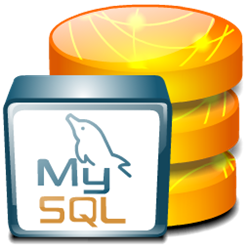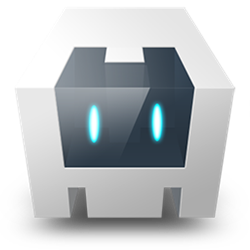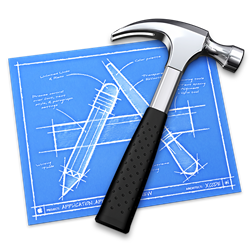Technologies
Our Expertise Technology Environment



























We Deliver your Demands According to your Custom Technology
MySQL

Why MySQL?
Many of the world's largest and fastest-growing organizations including Facebook, Google, Adobe, Alcatel Lucent and Zappos rely on MySQL to save time and money powering their high-volume Web sites, business-critical systems and packaged software.
The Main Features of MySQL
- Internals and Portability
- Data Types
- Statements and Functions
- Security
- Scalability and Limits
- Connectivity
- Localization
- Clients and Tools
______________
Cordova

Why use Cordova?
Apache Cordova is an open-source mobile development framework. It allows you to use standard web technologies such as HTML5, CSS3, and JavaScript for cross-platform development, avoiding each mobile platforms' native development language. Applications execute within wrappers targeted to each platform, and rely on standards-compliant API bindings to access each device's sensors, data, and network status.
Know more About Cordova______________
PhoneGap

Why use PhoneGap?
PhoneGap is a free and open source framework that allows you to create mobile apps using standardized web APIs for the platforms you care about.
Adobe PhoneGap Enterprise
Enterprise mobile application development and management across channels and platforms
The PhoneGap Developer App
Develop locally then see the changes instantly on your mobile device with our cross-platform app
Package mobile apps in the cloud
PhoneGap Build takes the pain out of compiling PhoneGap apps. Get app-store ready apps without the headache of maintaining native SDKs. Our PhoneGap Build service does the work for you by compiling in the cloud.
Know more About PhoneGap______________
Android Studio

Why Android Studio?
Android Studio is the official[4] integrated development environment (IDE) for developing for the Android platform.
Features
- Gradle-based build support.
- Android-specific refactoring and quick fixes.
- Lint tools to catch performance, usability, version compatibility and other problems.
- ProGuard integration and app-signing capabilities.
- Template-based wizards to create common Android designs and components.
- A rich layout editor that allows users to drag-and-drop UI components, option to preview layouts on multiple screen configurations.
- Support for building Android Wear apps
- Built-in support for Google Cloud Platform, enabling integration with Google Cloud Messaging and App Engine.
______________
AngularJS

Why AngularJS?
HTML is great for declaring static documents, but it falters when we try to use it for declaring dynamic views in web-applications. AngularJS lets you extend HTML vocabulary for your application. The resulting environment is extraordinarily expressive, readable, and quick to develop.
Alternatives
Other frameworks deal with HTML's shortcomings by either abstracting away HTML, CSS, and/or JavaScript or by providing an imperative way for manipulating the DOM. Neither of these address the root problem that HTML was not designed for dynamic views.
Extensibility
AngularJS is a toolset for building the framework most suited to your application development. It is fully extensible and works well with other libraries. Every feature can be modified or replaced to suit your unique development workflow and feature needs. Read on to find out how.
Data Binding
Data-binding is an automatic way of updating the view whenever the model changes, as well as updating the model whenever the view changes. This is awesome because it eliminates DOM manipulation from the list of things you have to worry about.
Controller
Controllers are the behavior behind the DOM elements. AngularJS lets you express the behavior in a clean readable form without the usual boilerplate of updating the DOM, registering callbacks or watching model changes.
Plain JavaScript
Unlike other frameworks, there is no need to inherit from proprietary types in order to wrap the model in accessors methods. Angular models are plain old JavaScript objects. This makes your code easy to test, maintain, reuse, and again free from boilerplate.
Know more About AngularJS______________
Bootstrap

Why use Bootstrap?
Easy to get started
Bootstrap offers LESS files for those of us who know how to use it, but it also provides the plain old CSS file for those don't want to use CSS pre-processing.
Great grid system
Bootstrap is built on responsive 12-column grids, layouts and components. Whether you need a fixed grid or a responsive, its only matter of a few changes.
HTML elements
A website has many different elements such as headings, lists, tables, buttons, forms, etc. All these fundamental HTML elements have been styled and enhanced with extensible classes.
Extensive list of components
Whether you need drop down menus, pagination or alert boxes, Bootstrap has got your covered. Styling of every single element follows a consistent theme and if you know LESS, then customizing it takes just few minutes.
Javascript plugins
The components such as drop down menu are made interactive with the numerous JavaScript plugins bundled in the bootstrap package.
Documentation
Not only does Bootstrap offer styling for almost every element a typical website or web application requires, it also provides a great documentation with examples and demo that only make it more easier for even someone new.
______________
CorelDRAW

Why use CorelDRAW?
Color and Color Management Features
- Multiple On-screen Color Palettes: CorelDRAW 9 can display multiple Color Palettes, giving users choice, speed, and flexibility when customizing their workspace.
Performance and Productivity Features
- New Scripting Commands: New scripting commands have been added to CorelDRAW 9. These automation commands increase the exposure of the application to third-party developers who wish to create CorelDRAW-based solutions for their customers and users.
- Enhanced Hot Key for Multiple Copies: Users can drop multiple copies of an object into a document by pressing the Spacebar as they move the object around the screen.
User Interface Enhancements
- Enhanced Pattern Fills: The Interactive Fill tool has been enhanced to make its behavior consistent with that of other interactive tools in CorelDRAW 9. A user can drag a color from the Color Palette to the front or back handles in the dialog box to change the foreground or background color of a Pattern Fill.
- Enhanced Drag-and-Drop Color Functionality: CorelDRAW 9 lets users change the color of an object layer by dragging a color from the on-screen Color Palette to a layer in the Object Manager. Layers can be colored individually to aid in the organization
Internet Features
- Map Text to HTML Style: Users who work with CorelDRAW 9 text styles can achieve a clean conversion to HTML by using Cascading Style Sheets (CSS) as a layout. The HTML files produced are more accurate and editable, since Corel text Styles are translated into CSS, enhancing the export of Web documents.
- Web Statistics Page: When publishing to the Internet, users can automatically generate a statistics page by enabling the Create Statistics Page check box in the Publish to Internet dialog box.
______________
CSS

Why use CSS?
CSS is used to take the content you already have and make it look more attractive; it is a language used to increase expressive style and creativity.
Search Engine Optimization
When you incorporate CSS into you website design, you will soon discover that search engines will have the aptitude to locate you much easier since CSS features a coding technique that is clear-cut and simple to read.
Browser Compatibility
Browser compatibility is very important and CSS addresses this issue nicely. When you decide to use CSS, you will find that it will improve the characteristic of your website while securing your visitors with the capacity to view your website as precisely as you have designed it to be.
Appearance
CSS makes it easy to improve the appearance of a website by allowing you to create a much more stylish website since CSS offers a wide array of expressive style capableness.
Maintainability
CSS produces is the consistency it provides when you want to make changes to a website. When a change is made to your websites CSS Style Sheet, you will have the ability to automatically correct or change every page throughout your website - all at once.
______________
.Net

Why use .Net?
- DotNet makes it easy for your database administrator to set up a centralized unit database on your unit's FTP site so that multiple leaders can access the SAME set of data files. This means you no longer have to worry about providing database backups to numerous leaders and then trying to coordinate database updates without someone getting left out of the loop.
- Data security! The web database is fully encrypted using a data encryption password that you define. No one without that password can view your data, even if someone hacks into your FTP site or intercepts the database upload.
- DotNet automatically handles the FTP site interface for you. When you log on, DotNet connects to your FTP site, downloads your encrypted database, and decrypts it. The program then decompresses the database and loads the files into your local data folder. At that point, you can even disconnect from the Internet. When you exit the program, DotNet compresses and encrypts your updated database and uploads the encrypted files back to your FTP site.
- DotNet is fast! Even if you don't have a high-speed connection, the program will operate at the same speed it does now because when you log on, the program downloads your database from your FTP site to your local hard drive. While you are working in the program, you will be working with this local copy of your data files, so your response times are instantaneous! In fact, you can even disconnect from the Internet and then re-connect when you're finished with your work. When you exit the program, it will automatically send the updated data files back to your FTP site.
______________
Drupal
Why use Drupal?
The features module enables the capture and management of features in Drupal. A feature is a collection of Drupal entities which taken together satisfy a certain use-case.
Features provides a UI and API for taking different site building components from modules with exportables and bundling them together in a single feature module. A feature module is like any other Drupal module except that it contains additional information in its info file so that configuration can be checked, updated, or reverted programmatically.
Examples of features -
- A blog
- A pressroom
- An image gallery
______________
HTML

Why use HTML?
- Web Workers: Certain web applications use heavy scripts to perform functions. Web Workers use separate background threads for processing and it does not effect the performance of a web page.
- Video: You can embed video without third-party proprietary plug-ins or codec. Video becomes as easy as embedding an image.
- Canvas: This feature allows a web developer to render graphics on the fly. As with video, there is no need for a plug in.
- Application caches: Web pages will start storing more and more information locally on the visitor's computer. It works like cookies, but where cookies are small, the new feature allows for much larger files. Google Gears is an excellent example of this in action.
- Geolocation: Best known for use on mobile devices, geolocation is coming with HTML5.
______________
JavaScript

Why use JavaScript?
Browser support
To access flash content, you need to install flash plugin in your browser. But to use javascript, you don't have to use any plugin at all. This is because all browsers have accepted javascript as a scripting language for them and provides integrated support for it.
client side as well as on server side
As javascript has access to Document object model of browser, you can actually change the structure of web pages at runtime. Due to this, javascript can be used to add different effects to webpages.
Functional programming language
In javascript, function could be assigned to variables just like any other data types.
Support for objects
Javascript is an object oriented language. However, the way javascript handles objects and inheritance is bit different from conventional object oriented programming languages like Java.
______________
MEAN.JS

What is MEAN.JS?
MEAN.JS is a full-stack JavaScript solution that helps you build fast, robust, and maintainable production web applications using MongoDB, Express, AngularJS, and Node.js.
Why MEAN.JS?
MEAN.JS will help you getting started and avoid useless grunt work and common pitfalls, while keeping your application organized. Our goal is to create and maintain a simple and readable open-source solution that you can use and trust in your projects.
Know more About MEAN.JS______________
MongoDB

Why use MongoDB?
______________
PhotoShop
Why use PhotoShop?
Puppet Warp
Puppet Warp lets you reshape or distort an image element by creating a "skeleton" for it, which can then be dragged around or transformed to give the element a new pose.
Content
Content-Aware Scaling lets you change the shape of an image without distorting its contents or cropping important features.
Layer styles
A layered approach makes it a piece of cake to create drop shadows, halos, embossing effects and similar stylings.
Vibrance
Adjusting the saturation of an image can often make already bright areas look too garish.
3D
Photoshop can open 3D files in a variety of formats, including 3DS and Google Earth KMZ files.
Proof Colors
When View | Proof Colors is ticked, Photoshop tries to display your image as it will appear in your chosen colour profile, rather than as it would look by default on your monitor.
______________
PHP

What is PHP?
- PHP is an acronym for "PHP: Hypertext Preprocessor"
- PHP is a widely-used, open source scripting language
- PHP scripts are executed on the server
- PHP is free to download and use
Why PHP?
- PHP runs on various platforms (Windows, Linux, Unix, Mac OS X, etc.)
- PHP is compatible with almost all servers used today (Apache, IIS, etc.)
- PHP supports a wide range of databases
- PHP is free.
- PHP is easy to learn and runs efficiently on the server side
______________
WordPress

Why WordPress?
Simplicity
Simplicity makes it possible for you to get online and get publishing, quickly. Nothing should get in the way of you getting your website up and your content out there. WordPress is built to make that happen.
Flexibility
With WordPress, you can create any type of website you want: a personal blog or website, a photoblog, a business website, a professional portfolio, a government website, a magazine or news website, an online community, even a network of websites.
Publishing Tools
WordPress makes it easy for you to manage your content. Create drafts, schedule publication, and look at your post revisions. Make your content public or private, and secure posts and pages with a password
User Management
Not everyone requires the same access to your website. Administrators manage the site, editors work with content, authors and contributors write that content, and subscribers have a profile that they can manage. This lets you have a variety of contributors to your website, and let others simply be part of your community.
Extend with Plugins
WordPress comes packed full of features for every user, for every other feature theres a plugin directory with thousands of plugins. Add complex galleries, social networking, forums, social media widgets, spam protection, calendars, fine-tune controls for search engine optimization, and forms.
Plugin System
The WordPress APIs make it possible for you to create plugins to extend WordPress. WordPresss extensibility lies in the thousands of hooks at your disposal. Once youve created your plugin, weve even got a plugin repository for you to host it on.
______________
XCode

Why XCode?
Xcode includes everything developers need to create great
applications for Mac, iPhone, iPad, Apple TV, and Apple Watch.
Xcode provides developers a unified workflow for user interface
design, coding, testing, and debugging. The Xcode IDE combined
with the Cocoa frameworks and Swift programming language make
developing apps easier and more fun than ever before.
Xcode includes the Xcode IDE, Swift and Objective-C compilers,
Instruments analysis tool, simulators, the latest SDKs, and
hundreds of powerful features:
- Innovative tools help you create great apps
- Swift is a powerful, modern, and fun programming language
- Interface Builder makes it easy to design your interface without code
- Professional editor and debugger keep your code front and center
- Apple LLVM technology finds and fixes bugs for you
- Test driven development is built right in
- Instruments makes performance analysis beautiful
______________
Zend Server

Why Zend Server?
- Gallery of community-driven plugins for unlimited extensibility;
- Z-Ray vision into your app increasing code quality and performance
- Live Support functionality to troubleshoot user problems in real-time
- Job queuing and caching for optimizing and boosting performance
- Monitoring and root-cause analysis
- Deployment ; Devlops capabilities to optimize app delivery
- H/A session clustering for maximum scalability and reliability
- Secure developer visibility into production [AG4]
- Multi-server management
______________
C++

Why use C++?
C++ is a general-purpose programming language. It has imperative, object-oriented and generic programming features, while also providing facilities for low-level memory manipulation.
It was designed with a bias toward system programming and embedded, resource-constrained and large systems, with performance, efficiency and flexibility of use as its design highlights. C++ has also been found useful in many other contexts, with key strengths being software infrastructure and resource-constrained applications, including desktop applications, servers (e.g. e-commerce, web search or SQL servers), and performance-critical applications (e.g. telephone switches or space probes). C++ is a compiled language, with implementations of it available on many platforms and provided by various organizations, including the FSF, LLVM, Microsoft, Intel and IBM.
Know more About C++______________
Material Designs

Why Material Designs?
Material Design is a design language developed by Google. Expanding upon the "card" motifs that debuted in Google Now, Material Design makes more liberal use of grid-based layouts, responsive animations and transitions, padding, and depth effects such as lighting and shadows. Designer Matias Duarte explained that, "unlike real paper, our digital material can expand and reform intelligently. Material has physical surfaces and edges. Seams and shadows provide meaning about what you can touch." Google states that their new design language is based on paper and ink. Material Design can be used in Android version 2.1 and up via the v7 appcompat library, which is used on virtually all Android devices that were made after 2009. Material Design will gradually be extended throughout Google's array of web and mobile products, providing a consistent experience across all platforms and applications. Google has also released application programming interfaces (APIs) for third-party developers to incorporate the design language into their applications. Google announced Material Design on June 25, 2014, at the 2014 Google I/O conference. As of 2015, most of Google's mobile applications for Android have applied the new design language, including Gmail, YouTube, Google Drive, Google Docs, Sheets and Slides, Google Maps, Inbox, all of the Google Play-branded applications, and to a smaller extent the Chrome browser and Google Keep. The desktop web interfaces of Google Drive, Docs, Sheets, Slides and Inbox have incorporated it as well. The canonical implementation of Material Design for web application user interfaces is called polymer paper elements. It consists of the Polymer library, a shim that provides a Web Components API for browsers that do not implement the standard natively, and the so-called "paper elements collection"
Know more About Material Designs______________
Node.Js

Why use Node.Js?
Fast
Node.js is a JavaScript runtime that uses the V8 engine developed by Google for use in Chrome. V8 compiles and executes JavaScript at lightning speeds mainly due to the fact that V8 compiles JavaScript into native machine code.
Tooling
npm is the Node.js package manager and it... is... excellent. It does, of course, resemble package managers from other ecosystems, but npm is fast, robust, and consistent. It does a great job at specifying and installing project dependencies. It keeps packages isolated from other projects, avoiding version conflicts.
Made Easy
Node.js excels at many concurrent connections, then it makes sense that it excels at multi-user, real-time web applications like chat and games. Node's event loop takes care of the multi-user requirement. The real-time power comes thru use of the websocket protocol.
Streaming data
Web frameworks treat HTTP requests and responses as whole data objects. In fact, they're actually I/O streams, as you might get if you streamed a file from the filesystem. Since Node.js is very good at handling I/O, we can take advantage and build some cool things.
Codebase
Meteor is a next-generation web framework built atop Node. It runs the same codebase on the both the client and server. This allows you to write client code that saves directly to a database.
Hosting
With rapid adoption, world-class Node.js hosting is also proliferating. In particular, Platform-as-a-Service (PaaS) providers such as Modulus and other reduce deployments to a single command.
______________
JQuery

Why use JQuery?
Simplicity
Developers find jQuery intuitive and easy to learn - this library is built on shorter, simpler code, after all. With simple syntax and open coding standards, developers can shorten the time it takes to deploy an application or site.
jQuery elements Display even when JavaScript is Disabled
If Adobe Flash isn't installed on any given browser, certain parts of the page may render incorrectly, if they render at all. This is not only unpleasant for the user; it forces developers to spend extra time coding for the browsers that lack the Flash plug-in, which adds to development time.
Easily Integrates
NuGet is a Visual Studio extension that makes it easy to add, remove, and update libraries and tools in Visual Studio projects that use the .Net Framework. NuGet has been around for years, and it's a trusted source for developers to exchange and develop packages for Microsoft Visual Studio.
Makes Animated Applications
Flash developers are not cheap. Developing in Flash requires a huge learning curve; for the average developer, it can take years of practice to be able to create the movie-like creations that made Flash famous. On the other hand, jQuery is free and requires only the knowledge of JavaScript and HTML.
Pages Load Faster
Google and other search engines using page load time as one of the many factors affecting SEO. For this, and many other, reasons, every developer should strive to make code as light and concise as possible.
SEO Friendly
jQuery can be optimized for search engines, and there are a lot of plug-ins available to aid developers in this task. Embedding your jQuery elements using unordered lists is an SEO-friendly practice that works well.
______________
Google APIs

Why Google APIs?
Google APIs is a set of application programming interfaces (APIs) developed by Google which allow communication with Google Services and their integration to other services. Examples of these include Search, Gmail, Translate or Google Maps. Third-party apps can use these APIs to take advantage of or extend the functionality of the existing services.
The APIs provide functionality like analytics, machine learning as a service (the Prediction API) or access to user data (when permission to read the data is given). Another important example is an embedded Google map on a website, which can be achieved using the Static maps API, Places API or Google Earth API.
Google APIs
______________
Ionic

Why Ionic?
Ionic is the beautiful, open source front-end SDK for developing hybrid mobile apps with web technologies.
A simple drag and drop interface building tool for creating real Ionic apps with a click of the mouse.
Lab is a desktop app for Mac and Windows that makes it a joy to create and work with Ionic apps.
Ionic is built to perform and behave great on the latest mobile devices. With minimal DOM manipulation, zero jQuery, and hardware accelerated transitions, one thing is for sure: You'll be impressed.
Ionic utilizes Angular in order to create a powerful SDK most suited to develop rich and robust applications. Ionic not only looks nice, but its core architecture is built for serious app development, and Angular ties in perfectly.
Know more About Ionic
______________
CodeIgniter

Why CodeIgniter?
Framework with a small footprint
CodeIgniter 3 has a 2MB download, including the user guide.
Exceptional performance
CodeIgniter consistently outperforms most of its competitors.
Compatibility with standard hosting
CodeIgniter 3 only needs PHP 5.2.4, and plays nicely with almost all shared or dedicated hosting platforms. Many webapps need a database, and CodeIgniter supports the most common, including MySQL.
No restrictive coding rules
Use your own coding and naming conventions, with only a few caveats that deal with classname conflicts. CodeIgniter looks to empower you, not shackle you.
Simple solutions over complexity
CodeIgniter encourages MVC, but does not force it on you.
Clear documentation
The CodeIgniter User Guide comes with the download. It contains an introduction, tutorial, a number of "how to" guides, and then reference documentation for the components that make up the framework.
No large-scale monolithic libraries
CodeIgniter is not trying to be all things to all people. It is a lean MVC framework, with enough capabilities to improve your productivity, while providing for third-party addons/plugins for additional functionality.
Nearly zero configuration
Much of the CodeIgniter configuration is done by convention, for instance putting models in a "models" folder. There are still a number of configuration options available, through scripts in the "config" folder.
No need for template language
CodeIgniter comes with a simple, substitution based, templating tool. Addons/plugins are available for most of the full-blown templating engines, if that is what you are used to.
Know more About CodeIgniter
______________
Zend Framework

Why use Zend Framework?
Modular
Building blocks that can be used piece by piece with other applications or frameworks
Secure
All the cryptographic and secure coding tools you need to do things right
Extensible
Easy to adapt the framework to your needs
Community
A vibrant and active contributor and user base for getting help and giving back
High Performing
Engineered with performance tuning in mind
Enterprise Ready
A proven history of success running business critical and high-usage applications
______________
Meteor

Why Meteor?
Meteor gives you a radically simpler way to build realtime mobile and web apps, entirely in JavaScript from one code base.
Meteor is a full-stack JavaScript App Platform that assembles all the pieces you need to build modern web and mobile apps, with a single JavaScript codebase. Angular and React are JavaScript UI frameworks that can be used in conjunction with Meteor, as an alternative to Meteors Blaze library. Think of Angular, React, and Blaze as the 'V' in MVC. Meteor automatically manages the data flow between cloud and client applications, as well as client UI state and rendering, regardless of which UI framework you use.
Meteor makes it easy to create iOS apps that can be installed through the App Store, and Android apps that can be installed through Google Play. Meteor compiles your apps using Apache Cordova so you dont have to create separate codebases for iOS and Android. This results in high-quality apps that run a mix of web and native code.
Know more About Meteor
______________
Sass

Why Sass?
Sass is the most mature, stable, and powerful professional grade CSS extension language in the world.
Sass is completely compatible with all versions of CSS. We take this compatibility seriously, so that you can seamlessly use any available CSS libraries.
Sass boasts more features and abilities than any other CSS extension language out there. The Sass Core Team has worked endlessly to not only keep up, but stay ahead.
Sass has been actively supported for about 9 years by its loving Core Team.
Over and over again, the industry is choosing Sass as the premier CSS extension language.
Sass is actively supported and developed by a consortium of several tech companies and hundreds of developers.
Know more About Sass
